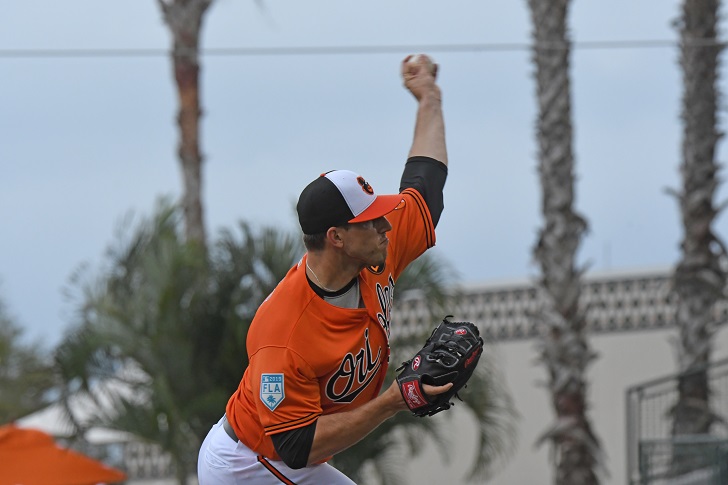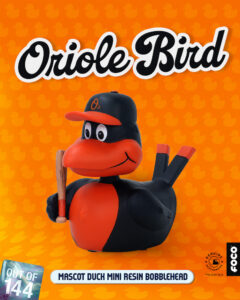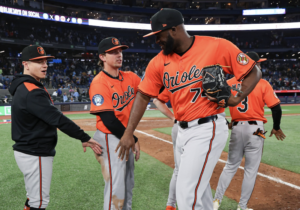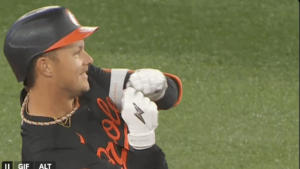Left-hander John Means has had an exceptional start to the season for the Orioles in 2019, certainly a surprise to most. If you asked fans back during spring training, “who will be on the opening day pitching staff?,’ I’d argue the majority — if not all — would’ve left Means off the list of 12 to 13 arms. Heck, even the pitcher himself thought he was going to be an early cut from camp.
He started the season in the O’s bullpen in a long-relief role, and has made two starts out of six total appearances in place of right-handed starter Alex Cobb, who has had two injured list stints early on. With Cobb returning to the rotation, Means figures to be bumped to the bullpen again.
The southpaw will likely get more opportunities to start at some point this season, and one could argue he deserves the shot.
Through 15 ⅔ innings this season, Means has posted a 1.72 ERA. His 17 strikeouts is good for a K/9 rate of 9.77. He has appeared to be more dominant out of the bullpen compared to starting games thus far, allowing one earned run and striking out 13 batters in 7 ⅔ relief innings, versus allowing six runs (two earned) with just four strikeouts over eight innings as a starter.
Baseball Savant shows that Means hasn’t been hit hard very often thus far. Of 134 pitchers in the big leagues who have experienced at least 40 Batted Ball Events this season, Means has the 86th-highest rate of balls hit at least 95 mph against him, at 35.7 percent. Three Orioles pitchers fall into the top 10: Andrew Cashner (50.6 percent), David Hess (50.8 percent) and Dan Straily (53.7 percent). That’s not a top 10 in which you want to find yourself.
Means has also given up an average exit velocity of 86.9 mph, tied for 100th out of the same group of 134 pitchers. Hess is tied for second with an average of 92.9 mph off the bat.
It’s an extremely small sample size, but the differences in Means’ strikeout numbers and the low exit velocity certainly catch my eye. If he continues this trend, he may be better suited for the bullpen instead of starting. That’ll be a conversation for another day, though.
What I am interested discussing right now is how he’s having this success.
The southpaw has two breaking balls in his arsenal, a slider and a curveball, but he doesn’t use them often. According to Brooks Baseball, the 25-year-old has thrown the slider just 6.49 percent of the time, and he throws his curveball even less at 4.87 percent.
He throws his fastball, averaging at 92.15 mph and topping at 94.96 mph, 52.92 percent of the time. Means has generated 26.09 percent whiffs per swing on his fastball this season, good for fifth among 20 pitchers who have taken the mound for the Orioles this season.
Making up the remainder of his pitches – at 35.71 percent – is the changeup. This has been his weapon early on.
Means’ changeup comes in 11.65 mph slower than his fastball, per Brooks Baseball, averaging 80.50 mph. According to FanGraphs’ Pitch Type data, the average gap between fastball and changeup velocity in 2018 was 8.6 mph. So far this year, the difference is 8.7 mph. FanGraphs also reveals that through April 18, of pitchers who throw changeups less than 81 mph on average, Means throws the hardest fastball to pair with it.
Yeah, the separation is that much.
That much of a velocity gap, combined with 9.41 inches of vertical movement on his changeup has helped him generate 40.91 percent whiffs per swing on the offering this season. Means’ changeup has also produced a high 60.87-percent groundball rate and low 8.7-percent line drive rate.
Per MLB Pipeline, Means was most-recently ranked the O’s 29th-best prospect in 2017, his lone appearance on their prospect rankings.
However, Kyle Glaser of Baseball America seems to think the Orioles struck gold with Means.
I was not familiar with Means until last week. A scout brought him up to me unprompted. Four days later (by complete chance) I saw him pitch at Fenway against the Red Sox. There's something there. O's have something. https://t.co/qvcdRby3rH
— Kyle Glaser (@KyleAGlaser) April 19, 2019
With two breaking pitches he rarely uses, which is probably for the best, Means has found success in the Orioles’ bullpen with his effective fastball-changeup combo. It may not be good enough to sustain in a starter’s role, which remains to be seen, but it has done more than enough to make him a valuable asset to the club’s bullpen to start the season.
Now all we can do is wait and see if this success Means is having will continue throughout the year. My opinion? He could have quite a few rough outings if he’s thrown back into a starter’s role without having a quality breaking ball to use more than just sparingly, but he’ll be a weapon for the Orioles out of a bullpen that has been struggling to find consistently successful relief outings from pitchers.









